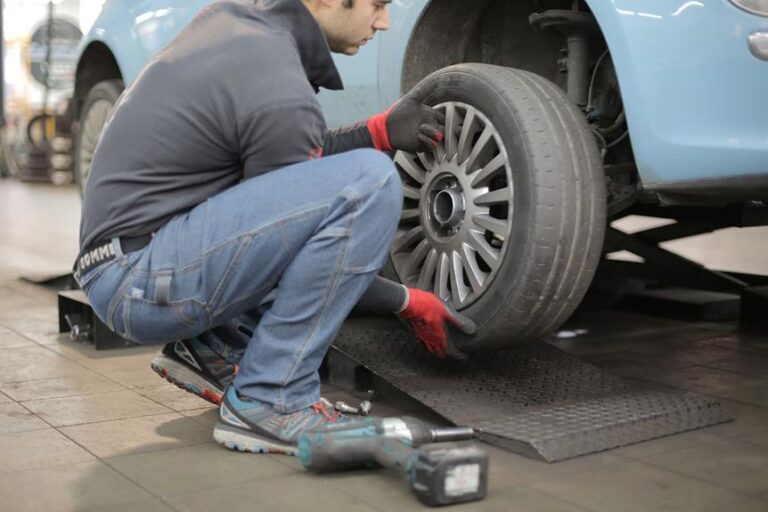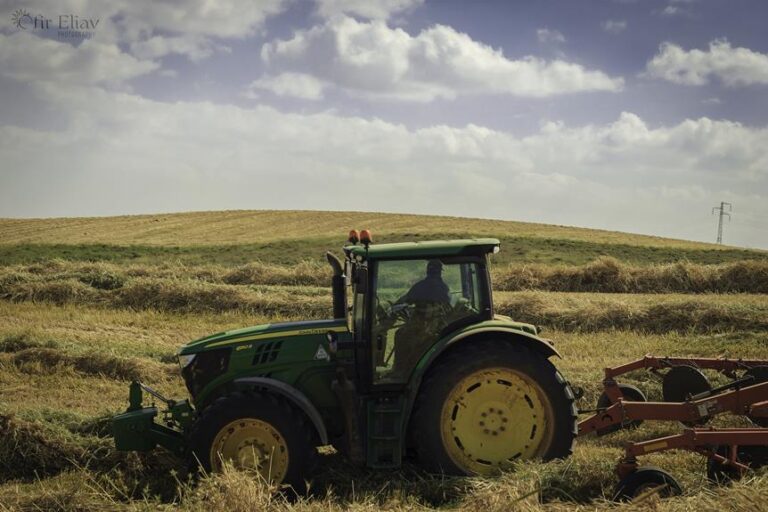Choosing Heavy-Duty Tires for Tough Environments
In the rugged realm of tough environments, where the trials of nature test the limits of mechanical fortitude, choosing the right heavy-duty tires becomes a paramount concern. These rubber guardians of the road must navigate through treacherous terrains, withstand harsh weather conditions, and bear the weight of heavy loads.
With a myriad of options available, understanding the key factors to consider in selecting these stalwarts of durability is essential. This article aims to guide you through the intricate world of choosing heavy-duty tires, ensuring a seamless journey in the face of adversity.
Key Takeaways
- Overall durability is crucial in tough environments.
- Puncture resistance is important to withstand sharp objects and debris.
- Heavy-duty tires offer enhanced traction on uneven and slippery surfaces.
- Tread design impacts off-roading capabilities.
Factors to Consider When Choosing Heavy-Duty Tires
One important factor to consider when choosing heavy-duty tires is the overall durability. In tough environments, such as construction sites or off-road terrains, the tires are subjected to various challenges that can significantly impact their performance. Puncture resistance is of utmost importance in these situations, as sharp objects and debris can easily puncture standard tires, leading to costly repairs and downtime. Heavy-duty tires are specifically designed to withstand punctures, with reinforced sidewalls and tread patterns that offer enhanced resistance. This ensures that the tires can withstand the harsh conditions and continue to perform optimally.
Another crucial aspect to consider is tire pressure. Heavy-duty tires need to be able to handle high levels of pressure to support heavy loads and maintain stability. The impact of tire pressure on heavy-duty tires cannot be underestimated. Maintaining the correct tire pressure is essential for optimal performance and longevity. Incorrect tire pressure can lead to increased wear and tear, reduced fuel efficiency, and compromised safety.
In conclusion, when choosing heavy-duty tires for tough environments, it is vital to prioritize durability, puncture resistance, and proper tire pressure. These factors play a significant role in ensuring that the tires can withstand the challenges of demanding conditions.
In the following section, we will discuss the importance of durability in tough environments and the specific features to look for in heavy-duty tires.
Importance of Durability in Tough Environments
Durability plays a crucial role in tough environments due to the extreme terrain demands and safety concerns. Heavy-duty tires that are built to withstand rugged conditions provide long-lasting performance benefits, ensuring reliable traction and stability.
With durability as a key factor, drivers can confidently navigate challenging terrains while maximizing their safety and minimizing the risk of tire failure.
Extreme Terrain Demands
Ensuring the longevity and reliability of tires becomes crucial when faced with the extreme terrain demands found in tough environments. Off-road challenges and extreme weather conditions can put immense strain on tires, leading to frequent punctures, reduced traction, and decreased performance. To overcome these challenges, heavy-duty tires specifically designed for tough environments are essential. These tires are engineered to withstand the harshest conditions and provide optimal performance on rugged terrains. They are constructed with reinforced sidewalls, enhanced tread patterns, and advanced rubber compounds to ensure durability and traction. Additionally, heavy-duty tires often feature self-cleaning capabilities to prevent mud and debris buildup, further enhancing their off-road capabilities. When choosing tires for extreme terrains, it is important to consider factors such as load capacity, tread design, and tire size to ensure the best performance and safety.
| Features | Benefits |
|---|---|
| Reinforced sidewalls | Increased puncture resistance |
| Enhanced tread patterns | Improved traction on rugged terrains |
| Advanced rubber compounds | Longevity and durability |
| Self-cleaning capabilities | Prevents mud and debris buildup |
Safety in Rugged Conditions
To achieve maximum safety in rugged conditions, it is crucial to prioritize the robustness and resilience of heavy-duty tires. When it comes to safety measures in extreme conditions and protective gear for rugged environments, heavy-duty tires play a vital role. Here are three reasons why prioritizing the strength and durability of these tires is essential:
- Enhanced Traction: Heavy-duty tires are designed with deep grooves and aggressive tread patterns, providing superior traction on uneven and slippery surfaces. This ensures better control and stability, reducing the risk of accidents.
- Increased Durability: These tires are constructed with reinforced sidewalls and stronger materials to withstand the harsh conditions of off-road terrains. They are built to resist punctures, cuts, and impacts, ensuring a safer driving experience.
- Improved Load Capacity: Heavy-duty tires have a higher load-carrying capacity, allowing vehicles to transport heavy loads without compromising safety. This feature is crucial for industries such as construction, agriculture, and mining, where the transportation of large and heavy equipment is common.
Long-Lasting Performance Benefits
By focusing on the strength and resilience of heavy-duty tires, individuals can experience the long-lasting performance benefits they provide in tough environments. Heavy-duty tires are specifically designed to withstand extreme conditions, offering longevity benefits that regular tires cannot match. These tires are constructed with reinforced materials and robust sidewalls, allowing them to endure heavy loads, rough terrain, and harsh weather conditions.
The performance advantages of heavy-duty tires include enhanced traction, improved stability, and increased durability. Whether it is off-roading, hauling heavy loads, or navigating challenging terrains, heavy-duty tires deliver exceptional performance and reliability.
However, an important factor contributing to their performance is the role of tread design. The tread pattern of heavy-duty tires plays a crucial role in providing optimal grip, traction, and handling in different environments. Understanding the impact of tread design on tire performance is essential for individuals seeking the best heavy-duty tires for their specific needs.
The Role of Tread Design in Heavy-Duty Tires
The role of tread design in heavy-duty tires is crucial for ensuring optimal performance in tough environments.
Tread patterns and traction play a significant role in providing grip and stability on various surfaces, such as mud, snow, and rocky terrains.
Additionally, the tread design impacts off-roading capabilities, allowing for better maneuverability and control.
Furthermore, a well-designed tread pattern enhances durability and tread life, enabling the tire to withstand the rigors of heavy-duty applications.
Tread Patterns and Traction
An understanding of tread patterns and traction is essential when selecting heavy-duty tires for challenging terrains. The right tread pattern can greatly impact off-road performance and wet traction, enabling drivers to tackle even the toughest environments with confidence.
Here are three key factors to consider:
- Aggressive Tread: A deep and aggressive tread pattern enhances traction on off-road surfaces by digging into the terrain, providing superior grip and preventing slippage.
- Self-Cleaning Ability: Tires with self-cleaning capabilities help expel mud, rocks, and debris from the tread, maintaining optimal traction and preventing clogging that can hinder performance.
- Siping Technology: Siping, or the addition of small cuts in the tread blocks, improves wet traction by allowing the tire to better grip wet surfaces, reducing the risk of hydroplaning and enhancing overall safety.
Understanding the impact of tread patterns and traction on heavy-duty tires is crucial for off-roading enthusiasts, as it directly affects the tire's ability to navigate challenging terrains and maintain control in wet conditions.
Impact on Off-Roading
How does the tread design of heavy-duty tires impact off-roading performance?
When it comes to off-roading, the choice of tires plays a crucial role in determining the vehicle's performance. The tread design of heavy-duty tires is specifically engineered to enhance off-road capabilities.
These tires are designed with deeper and wider grooves, allowing them to dig into loose surfaces like mud, sand, and gravel, providing better traction and grip. The aggressive tread pattern also helps to self-clean and prevent the accumulation of debris, ensuring optimal performance in challenging terrains.
Additionally, heavy-duty tires are constructed with reinforced sidewalls to resist punctures and withstand the rough conditions encountered during off-roading.
Therefore, investing in heavy-duty tires as part of off-road vehicle modifications can greatly enhance the benefits of off-roading, allowing enthusiasts to explore and conquer new terrains with confidence and freedom.
Durability and Tread Life
One important aspect to consider when evaluating heavy-duty tires is their durability and tread life, as it directly impacts the overall performance and longevity of the tire. Heavy-duty tires are specifically designed to withstand tough environments and provide optimal performance.
Here are three key factors to consider when assessing the durability and tread life of heavy-duty tires:
- Tread Design: The tread pattern plays a crucial role in the tire's ability to grip the road surface, especially in challenging conditions. Look for tires with deep and aggressive tread patterns for enhanced traction and better resistance to wear.
- Construction Materials: High-quality heavy-duty tires are constructed using durable materials such as reinforced rubber compounds and strong sidewalls. These materials increase the tire's resistance to cuts, punctures, and abrasions, ensuring a longer lifespan.
- Regular Maintenance: Proper tire maintenance is essential for maximizing their durability and performance. Regularly check the tire pressure, rotate the tires, and ensure proper wheel alignment. Additionally, avoid overloading your vehicle, as it can put excessive strain on the tires and lead to premature wear.
Load Capacity: A Crucial Consideration for Tough Environments
Given that heavy-duty tires are subject to extreme conditions, such as rough terrains and heavy loads, it is imperative to prioritize load capacity when making decisions for tough environments. Load capacity refers to the maximum weight a tire can safely carry under specified conditions. In tough environments, where the demands on tires are high, choosing tires with the appropriate load capacity is crucial for ensuring safety and performance.
When operating in tough environments, it is essential to consider the weight of the load being carried. Overloading tires can lead to excessive strain, premature wear, and potential tire failure. To determine the suitable load capacity, it is essential to consider factors such as the vehicle's weight, the weight of the load, and the number of tires supporting the load.
Additionally, maintaining proper tire pressure is vital for heavy-duty tires in tough environments. Adequate tire pressure ensures optimal load distribution, improves traction, and enhances fuel efficiency. Insufficient tire pressure can result in reduced load capacity, decreased stability, and increased rolling resistance, leading to higher fuel consumption.
Therefore, when making decisions for tough environments, it is crucial to prioritize load capacity and ensure proper tire pressure. By selecting tires with the appropriate load capacity and maintaining optimal tire pressure, operators can maximize performance, enhance safety, and extend tire life in challenging conditions.
Tire Size and Compatibility for Tough Terrains
Determining the most suitable tire size and ensuring compatibility with tough terrains is essential for optimizing performance and safety in challenging environments. When it comes to heavy-duty tires, here are three key factors to consider:
- Load Capacity: Heavy-duty tires are designed to handle increased loads and provide stability in demanding conditions. With the right tire size, you can ensure that your vehicle can carry heavy loads without compromising safety or performance.
- Durability: Tough terrains can be unforgiving, causing wear and tear on tires. Choosing the right tire size allows for a larger contact patch, distributing the vehicle's weight more evenly and reducing the risk of punctures or blowouts. Regular tire maintenance, including proper inflation and rotation, is crucial to maintaining durability and extending tire life.
- Traction: The right tire size can enhance traction on challenging surfaces such as mud, snow, or gravel. Deep treads and specialized compounds can provide the necessary grip, allowing for confident maneuverability in off-road or slippery conditions.
In addition to tire size and compatibility, choosing the right tread pattern for different environments is equally important. Let's explore this further in the following section.
Choosing the Right Tread Pattern for Different Environments
Interestingly, the performance of heavy-duty tires can be significantly affected by the choice of tread pattern and the type of environment they are used in. When it comes to off-road performance, the right tread pattern can make all the difference.
The tread pattern determines the tire's ability to grip various surfaces, such as mud, gravel, and rocks, and it plays a crucial role in ensuring optimal traction. In off-road conditions, a tire with aggressive tread patterns, such as deep lugs or large voids, is preferred. These patterns provide better grip and help the tire bite into the terrain, improving traction and preventing slippage. Additionally, the tread design should offer self-cleaning properties, allowing the tire to shed mud and debris for consistent performance.
While off-road performance is important, it is equally crucial to consider the tire's wet weather traction. The tread pattern should be designed to disperse water efficiently, reducing the risk of hydroplaning and maintaining grip on wet surfaces. Tires with circumferential grooves and sipes are effective in channeling water away from the tire's contact patch, ensuring better control and stability in wet conditions.
Understanding Tire Construction for Maximum Performance
One key aspect to consider when aiming for maximum tire performance is understanding the intricate construction techniques used in tire manufacturing. Tire construction materials play a crucial role in determining the performance and durability of a tire. Here are three important factors to consider when it comes to tire construction and performance optimization:
- Tread Compounds: The materials used in the tread compound greatly impact the tire's grip, traction, and wear resistance. Different types of polymers, fillers, and additives are carefully blended to achieve the desired balance of performance characteristics. For example, high-performance tires often use a softer tread compound for enhanced grip, while all-season tires prioritize a balance between grip and longevity.
- Reinforcements: Tire carcass reinforcements, such as steel belts, fabric plies, and sidewall reinforcements, are crucial for maintaining the tire's shape, stability, and resistance to punctures. The type and number of reinforcements used can vary depending on the intended application and performance requirements.
- Construction Techniques: Advanced tire manufacturing techniques, such as radial construction, help optimize tire performance. Radial construction allows for better heat dissipation, improved fuel efficiency, and enhanced handling characteristics. Additionally, innovative construction techniques, like the use of lightweight and high-strength materials, can further enhance tire performance.
Understanding the construction techniques and materials used in tire manufacturing is essential for selecting the right tire for your specific needs. By considering these factors, you can make an informed decision and maximize the performance of your tires, ultimately ensuring a safer and more enjoyable driving experience.
Sidewall Strength: The Key to Withstanding Harsh Weather Conditions
To withstand harsh weather conditions, tire sidewall strength is of utmost importance as it plays a critical role in ensuring stability and durability. The sidewall is the vertical section of the tire that connects the tread to the bead, providing structural support and protection against external forces. Sidewall durability is essential for off-road enthusiasts and commercial vehicle operators who frequently encounter rough terrains and challenging environments.
Sidewall durability is achieved through the use of high-quality materials and innovative construction techniques. Manufacturers reinforce the sidewalls with layers of strong, flexible materials such as steel or polyester, which enhance puncture resistance and prevent the tire from getting damaged by sharp objects or debris on the road. Additionally, sidewall designs with thicker rubber or reinforced construction provide extra protection and minimize the risk of sidewall damage.
Longevity and Cost-Effectiveness: The Benefits of Heavy-Duty Tires
Heavy-duty tires offer significant longevity and cost-effectiveness, making them a practical choice for industries operating in rugged environments. These tires are specifically designed to withstand the harsh conditions of off-road terrains, providing durability and reliability.
Here are three key benefits of heavy-duty tires that evoke an emotional response in the audience:
- Enhanced Safety: Heavy-duty tires are built with reinforced sidewalls and tread patterns that provide excellent traction and stability. This ensures better control of the vehicle, reducing the risk of accidents in challenging environments.
- Cost Savings: The longevity of heavy-duty tires means less frequent replacements, resulting in cost savings for businesses. Additionally, their robust construction reduces the likelihood of punctures and damages, minimizing downtime and repair expenses.
- Fuel Efficiency: Heavy-duty tires are designed to have a lower rolling resistance, which positively impacts fuel efficiency. By reducing the effort required to move the vehicle, these tires help optimize fuel consumption, resulting in significant savings over time.
Frequently Asked Questions
What Are Some Common Types of Tough Environments That Heavy-Duty Tires Are Designed For?
Common types of tough environments heavy-duty tires are designed for include off-road terrains, construction sites, and mining areas. Choosing the right tires for each environment is crucial to ensure optimal performance, durability, and safety.
Are Heavy-Duty Tires Suitable for Off-Road Use Only, or Can They Also Be Used on Regular Roads?
Heavy-duty tires are not limited to off-road use; they can also be used on regular roads. However, there are pros and cons to consider. While heavy-duty tires offer increased durability and traction, they can negatively impact fuel efficiency on regular roads.
How Often Should Heavy-Duty Tires Be Replaced in Order to Ensure Maximum Performance and Safety?
When considering the replacement of heavy-duty tires for maximum performance and safety, it is important to take into account key factors such as the terrain, load capacity, tread pattern, and tire age.
Can Heavy-Duty Tires Be Used on Vehicles With Different Load Capacities, or Do They Need to Be Matched Specifically to the Vehicle?
Heavy-duty tires can be used on vehicles with different load capacities, providing numerous advantages in tough environments. Matching the tires to the vehicle ensures optimal performance and safety, reducing the risk of accidents and damage.
Are There Any Specific Maintenance or Care Instructions for Heavy-Duty Tires to Ensure Their Longevity and Effectiveness in Tough Environments?
To ensure the longevity and effectiveness of heavy-duty tires in tough environments, it is important to follow maintenance tips and care instructions. These include regular inspections, proper inflation, rotation, and alignment, as well as avoiding overloading and driving on rough terrain.
Conclusion
In conclusion, choosing heavy-duty tires for tough environments requires careful consideration of factors such as:
- Durability
- Tread design
- Load capacity
- Tire size and compatibility
- Tread pattern
- Tire construction
- Sidewall strength
These tires provide maximum performance and longevity, withstanding harsh weather conditions and offering cost-effectiveness.
Like a sturdy fortress that withstands the harshest of storms, heavy-duty tires ensure reliable and safe transportation in challenging terrains.







